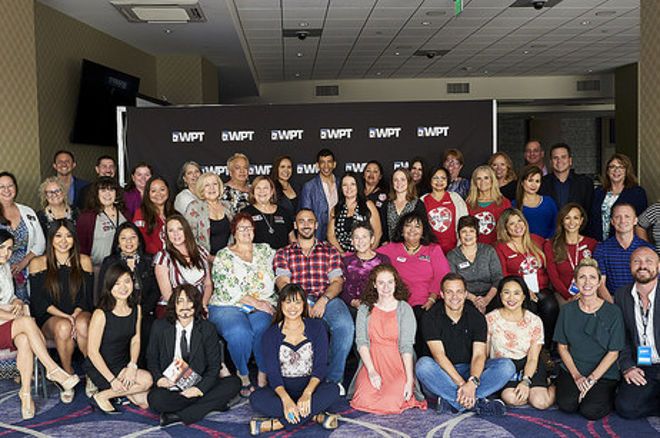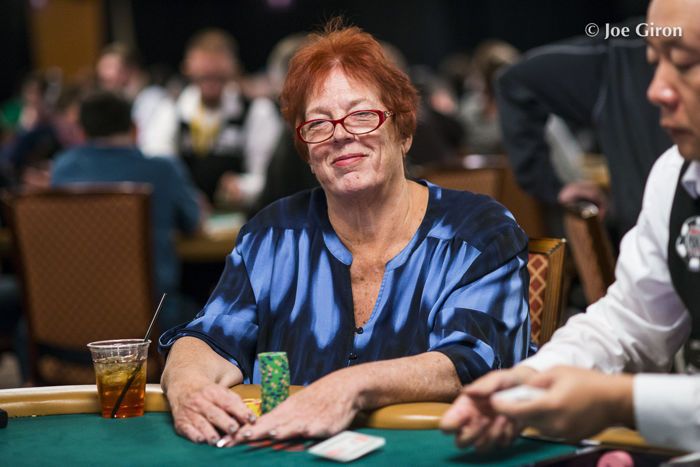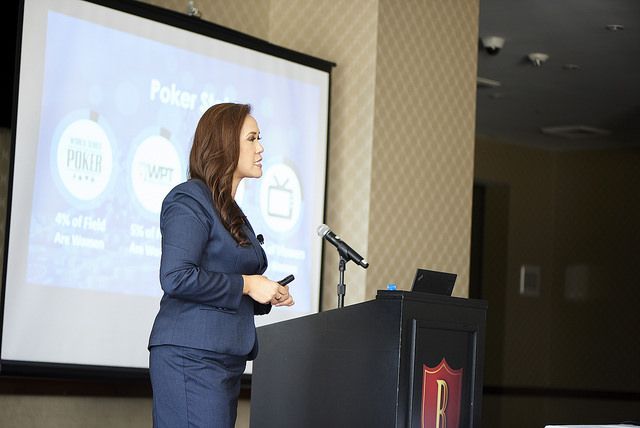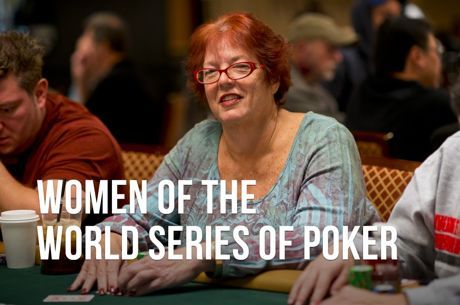WPT Women's Poker Summit Tackles Poker Industry Challenges

��It wasn��t for the meek, and it wasn��t for the weak.�� --Linda Johnson
Poker Hall of Famer and Women in Poker Hall of Famer Linda Johnson was speaking of playing poker as a woman in the 70s and 80s, when she and Barbara Enright recalled the men used to blow smoke in their faces, an explicit physical message of ��you don��t belong.�� But it was women like these who blazed the trail for others to succeed in yet another male-dominated field.
A major difference from other traditionally male-dominated fields, Johnson pointed out in her introduction at the WPT Women��s Poker Summit Sunday at the Bicycle Casino, is that the line in the poker industry isn��t moving. In four decades of the World Series of Poker, female participation has gone from something like one percent to four percent, Johnson mentioned, still a pretty dismal number. That prompted her question, ��What are we doing wrong?��

The World Poker Tour Steps Up
The World Poker Tour has been a leader in the poker industry for decades, so it's not surprising to see them at the forefront of the latest push to increase the participation of women in poker. Under Adam Pliska��s leadership, female representation at the executive level in the company has risen to 60 percent - a fact about which the company prides itself.
��What are we doing wrong?��
According to WPT Vice President of Global Tour Management Angelica Hael, it��s not necessarily a lack of interest in poker among the female half of the population leading to the low numbers in live tournaments. Women represent 25 percent of WPT televised show viewers as well as 25 percent of Zynga (free poker app) users. But still, the percent of poker tournament fields across the board hovers between four and five percent.
The reasons for that gap and potential ways to close it provided the focus of the WPT Women��s Poker Summit that Hael led on Sunday. The summit invitees were asked to discuss in roundtable format issues experienced or witnessed in poker, and tasked with coming up with concrete solutions to close the wide gap between the number of women at home interested in the game and those who are making it out to live events.
The summit focused on three overarching categories: unwelcoming environment, game format and accessibility, and societal attitudes. Many interesting ideas came from the forum, too many to list here, but some highlights stand out.

Today��s Poker Environment
Many of the circumstances that potentially hinder women from participating in poker rooms may also apply to men, or to newcomers in general. Poker can be an intimidating environment, and there doesn��t seem to be an incredibly high level of tolerance for those who interrupt the flow of the game �� at least at the lower levels. The need for more training opportunities for women or others interested in learning the game was suggested by many attendees.
Other discussions focused on the need to make poker rooms safer for women and any player targeted with abusive or inappropriate comments. Training of poker room workers from the top-down, from management to dealers and others was suggested. Industry stalwart and long-time poker room manager Kathy Raymond emphasized the importance of enforcing anti-abuse policies, principally by making examples of those who exhibit misconduct, which she assured has worked wonders for her in the past.
Bonnie Carl, President of the Women��s Poker Association reiterated that point, advocating for a zero-tolerance policy that is actually enforced and supported with staff training from management down and removing players who do not follow the conduct rules. WPT Executive Tour Director Matt Savage discussed in his recent blog having to remove a player at the Commerce for being disrespectful to a female regular, a move he sees as one of the highlights of his career based on the appreciation that many female players in the room expressed.
��The poker room is NOT a locker room.��--Matt Savage
The poker world is small, especially when you look at regional poker circles. When a player gets removed from a room for an etiquette breach, other players will take note. The overall idea seems to be to change the standard, change what passes for acceptable behavior, and do it as an industry, card room by card room.
An idea for a standardized certification that card rooms can attain to get stamped as women-friendly was another interesting idea, along with a text hotline to card room management where players can discreetly report harassment or abuse. As Savage mentioned in his WPT blog last month, ��the poker room is not a locker room.��
Like Savage, the summit participants agreed that sexual comments to other players, dealers, wait staff or massage therapists are both extremely common in poker rooms, are not appropriate, and should not be tolerated �C which includes changing the somewhat common practice of poker room management turning a blind eye to such remarks and abuse when they arise.

Societal Factors
In addition to the issue of how to get women to show up to play in live venues, there's the reality that most of the women who do so play small stakes, and most do not progress to the highest stakes. As the stakes go up, women are even less represented. This is unfortunate as anecdotal evidence implies that women at higher stakes face less discrimination at the tables. The fact that fewer women than men are moving up in stakes to reach higher levels could be due to a variety of reasons, many being social in nature.
Women often have more familial responsibilities than men and as a result, fewer women have poker as a top priority. Women, in general, are more conservative with finances, and may have a stricter budget that can be dedicated to poker. Many women play for recreation and are content to play smaller stakes, stay within their allotted bankroll, and don��t have the time to work on their games and try to move up stakes �C and may not even have aspirations of doing so.
There��s also the question of staking. Males seem more likely to get staked in general, but they also usually have more opportunities to do so. Women, by contrast, may not feel comfortable being staked by men because of the social implications of ��owing�� a man something, which unfortunately many women have experienced. The idea of female-to-female staking groups was discussed, and indeed, is not new.
In fact, the Poker League of Nations (PLON) already hosts women-only satellites into open events worldwide and sent two ladies to the WSOP Main Event this year. More on this organization will be presented in a forthcoming article. Continued initiatives and opportunities for ladies to enter open events for discounted prices would definitely contribute to growing the number of women playing at the higher stakes.

Moving in the Right Direction
Time will tell what changes will arise from the women��s summit discussions, what ideas will get taken up and enforced by tours or card rooms, or how players (women and men) will take responsibility upon themselves to exhibit inclusive etiquette and police games they play in when they witnesses abuses take place.
"Women still only make up a very small percentage of poker players. We, as a community, need to work to change that.��
One thing is for sure. As long as so many leaders in the industry are committed to having these conversations and are serious about enforcing profound changes in poker to make it a more welcoming and non-discriminatory environment for all, the industry as a whole moves in the right direction.
As Savage wrote in his blog, ��I��ve always said that if we could just get the percentage of women playing to 20 percent, then that would be a massive difference�� Women still only make up a very small percentage of poker players. We, as a community, need to work to change that.��
It��s important to remember that increasing the number of women in poker is better for everyone, especially in an industry that generally judges success based on sheer volume of players or tournament entries and prize pool amounts. As the WPT Women's Poker Summit demonstrated, the poker community is ready �� and willing �� to work to increase the persistently low number of women in the game.
Photos courtesy of World Poker Tour/Antonio Abrego.









